2nd hand product, invery good conditions, without original box, slight signs of use, 1 year warranty.
Metrum Acoustics Adagio non-oversampling Digital Preamplifier
The Metrum Adagio is NOT a Pavane with a volume control, it's much more. It's a state-of-the-art DAC installing the DAC TWO modules and can be used also with its own special preamplifier, to directly connect your power amplifiers.
Sometimes it's not easy to understand the difference with the Metrum Pavane.
From the outside it seems just a volume potmeter and a different type of remote but the inside tells more.
• As volume is controlled by changing the reference voltage of the dacs, max ref voltage is increased 3 times. This approach created a noise floor of - 155 dB ,extreme linearity and very low distortion!
• Instead of using our DAC ONE module as used in our Pavane, for the Adagio we used our DAC TWO. DAC TWO is using two R2R ladders on the inside which means that the Adagio is using 16 ladder dacs instead of 8 ladder dacs as used in the Pavane.
• The Adagio is running on double voltages compared to the Pavane.
• The Pavane is using 15 VA transformers for each channel, the Adagio is using 30VA for each channel.
• By using DAC TWO modules ( in fact every module contains a FPGA + two R2R ladders) there is no need to use the external FPGA anymore as used in the Pavane. This location on the digital input board can be used for future options
• As the Adagio is a digital preamp there is an option to control two power amps.
• As the Adagio can be connected to every type of power amp it has two possible output voltages
• And of course the Adagio will drive our future stereo and mono blocks, hopefully ready end of 2016
What more can you do after launching one of the best dacs available today?
We are aware that our current flagship Pavane is hard to beat but at least one idea was not realized yet. The idea of having a decent volume control to prevent a necessary pre-amplifier could improves performance dramatically. However, we also know that the way of introducing such device in the signal chain can also have a negative effect.
Experiments were made and as result the best sound was coming directly from our Transient™ modules. Even the digital approach did not convinced us but still one idea was not tried yet. Especially in case of R2R ladder dacs it is quite easy to change the output voltage of the dac by changing its reference voltage but to realize this, dedicated dac boards were designed to get the best regulation possible.
Like our Pavane, “forward correction” techniques are used to drive both mono dac boards. The result of this process is an extremely high linearity, right down to -140 dB, which gives the Adagio a realistic 24 bit dynamic range.
The Adagio is a step forwards as it omits a pre-amplifier. It is musical, honors the Non-oversampling principle and simultaneously incorporating the technological progress that has been made over the years.
Specifications:
- Working Principle: Non oversampling dac. Forward (FPGA) corrected, 4 Dacs pro channel in differential mode.
- Power: 75 VA via 3 separated torodial transformers.
- Mains Voltage: AC 220/230V AC 60/50Hz
- Input: 1x optical, 2x coaxial (1x BNC and 1x RCA) - AES/EBU and USB
- Outputs: RCA : 3 Volts RMS max. 0dB output setting; XLR: 6 Volts RMS max. 0dB output setting; RCA :1 Volts RMS max. -10dB output setting;XLR: 2 Volts RMS max.-10dB output setting.
- Output Voltages: RCA : 2 Volts RMS - XLR: 4 Volts RMS
- Frequency Response: 1Hz - 20 khz -1dB. 44.1 kHz sampling; 1Hz - 65 kHz -1dB .192 kHz
- Distortion: 0,006 % THD
- Noise: -145 dB t.o.v. 2 Volt RMS
- Output Impedance: RCA 100 Ohm. XLR 640 Ohm 0dB output setting; RCA 100 Ohm. XLR 320 Ohm -10dB output setting.
- Sampling Rates: Optical 44 - 96 kHz sampling rate
- Coax and AES/EBU: 44 -192 kHz . USB 44 - 384kHz sampling rate
- Dimensions: 440 x 320 x 85 mm.
- Weight: 9000 grams
Cees Ruijtenberg. "It's easy to see how the Adagio is part of the same family as our Pavane yet under the hood we optimized it to excel as a preamplifier. Compared to the Pavane, we made several changes to insure that performance of the volume control remained constant across its range. Since we alter the reference voltage of the converters to change volume, we needed the very best performance from them. Therefore we drive them almost to their limits for the lowest distortion and best S/N ratio. We also changed the DAC ONE module of the Pavane to the newer DAC TWO. As you'll remember, we used an FPGA to split up the 24-bit domain into two streams, each fed to a single DAC One module. Afterwards we summed these streams to get back the full analog signal with improved low-level linearity".
"I'd always wanted to get this process under the hood of just one module. In other words, take two of the DAC ONE modules plus their external FPGA, then put them in the small housing we already used. First steps were taken under a microscope and successful. We aced this during the spring of 2016 but a lot of effort then went into optimizing our test facilities. We must load each DAC with the algorithm and test it at the same time. Because we like to watch for consistent performance, production capacity was limited. For instance, we see the effect of pollution on very low levels due to solder residue. It's one more reason why one should never build ladder DACs in free air. Another disadvantage are temperature changes. Those can be avoided in our housing which keeps the temperature constant for each resistor of the ladder. Look at the above table. It shows you the accuracy needed for 24 bits of resolution which can only be achieved with laser trimming. The very best resistors today have an accuracy of ~0.01%. That means about 14 bits. What can also be seen is that due to so-called 'Johnson noise', you never exceed 24-bit accuracy in the analog domain. Johnson noise is the thermal self noise of a resistor itself. This can only be lowered by suppressing the ambient temperature. For a normal environment at 25°C (even higher inside many electronics), 32-bit resolution is commercial hooey. It's impossible. Johnson noise will dominate. Perhaps in the Arctic's sub-zero temps of -40°C, resistors will perform better but to be more precise, higher resolution is currently only possible in the digital domain. That's in fact our FPGA which runs at 400MHz using 64-bit words."
"Another advantage for our DAC Two module is that it contains paired converters. Using the same number of modules as before, we now double the effective number of ladders. The current Pavane runs four modules per side, hence four ladders. The Adagio gets eight per channel even though you only see four. This doubling has a positive effect on noise, distortion and linearity. That's why we started an update program to get the Pavane to the same performance level. The current Pavane is now marked Level 1. Two more levels can be chosen, from Level 2 [+€826 ex VAT for the 192kHz broadcast module] to Level 3 [+€1'240 ex VAT for the 384kHz high-end version]. A final advantage of the DAC TWO module is that it frees up the slot for the external FPGA on the digital input board for future options. We already sent our DAC TWO module to MQA and have been certified. We are now busy creating the MQA module as an option across our entire range from Musette to Adagio (as long as the DAC TWO module is used). Back to the Adagio. Because we use a variable reference voltage, we had to redesign the boards. Because the modules need some voltage to work, it is not possible to go to zero. A safe minimum level is -60dB—quite low already—but to achieve true zero, we added a mute function. For matching the Adagio to every kind of amplifier, there is a new switch for each channel on the back. This lowers the output by -10dB; about 700mV RMS. Last but not least, we created some 3-pin trigger connectors on the back to switch power amps on and off; and use three 30VA not 15VA power transformers.
"Sonically, the Adagio (or Pavane Level 2 or 3) goes a step further and is even more refined than what you've heard from us yet. It's also compliant now with 384kHz sample rates. Running the Adagio as a normal converter is realized by setting its volume to 12:15. This is equivalent to an upgraded Pavane run with a standard preamplifier. However, when the Adagio connects directly to a power amp, it relies on a new mind set. Now any kind of 'secret sauce' or 'signature' disappears. It certainly brings you closer to minute musical details but can also be a reason to change out cables or other types of tweaks. I don't have to tell you that the sum of all parts in the chain will have a clear effect on the final result. As to max output, setting that was a careful match between noise figures and voltage so we set it at just above 4/2Vrms for XLR/RCA. You probably have to increase the encoder's setting a bit more for very low-level recordings but in all cases we tried, including your Pass amps, adjustments were very convenient. With a 2Vrms output, the noise floor in amp-direct mode is now -155dB! That's because our converters run on twice the voltage and thrice the reference voltage as before. This boosted the Pavane's already very good noise figures by another 10dB. Finally, when connecting the Adagio to the mains for the very first time, use the remote to release the mute function. Only when the Adagio disconnects from the mains and then reconnects must this be done again. It takes about three weeks of use before the sound fully matures so leave it on for the duration."
Background information on non-oversampling conversion
- Non-oversampling Digital filter-less DAC Concept by Ryohei Kusunoki
- Manifacturing and testing the mini dac










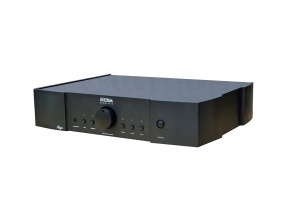




![AURALiC VEGA DAC [2nd hand]](https://www.playstereo.com/24641-home_default/auralic-vega-dac-2nd-hand-.jpg)
![AURALiC VEGA DAC [2nd hand]](https://www.playstereo.com/img/p/en-default-home_default.jpg)

![FIIO SnowSky TINY B - Portable DAC and Headphone Amplifier [b-Stock]](https://www.playstereo.com/24727-home_default/fiio-snowsky-tiny-b-portable-dac-and-headphone-amplifier-b-stock-.jpg)

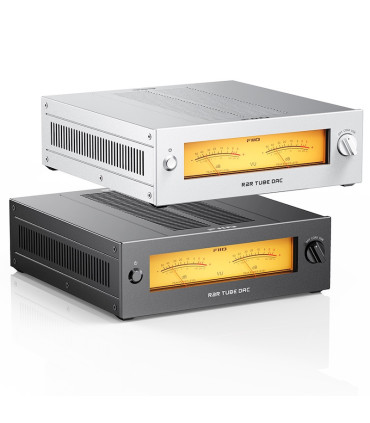



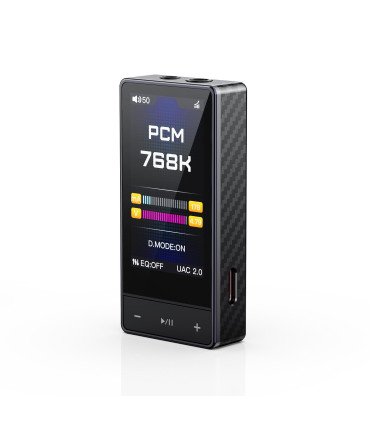

![Shanling UP4 Portable DAC + Bluetooth Headphone Amplifier [b-Stock]](https://www.playstereo.com/24391-home_default/shanling-up4-bluetooth-headphone-amplifier-b-stock-.jpg)
![FiiO K9 Pro ESS Skylight Sunroof Exploration Desktop DAC with Headphone Amplifier [b-Stock]](https://www.playstereo.com/24355-home_default/fiio-k9-pro-ess-skylight-sunroof-exploration-desktop-dac-with-headphone-amplifier-b-stock-.jpg)

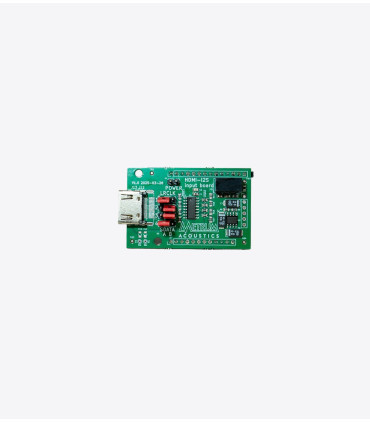

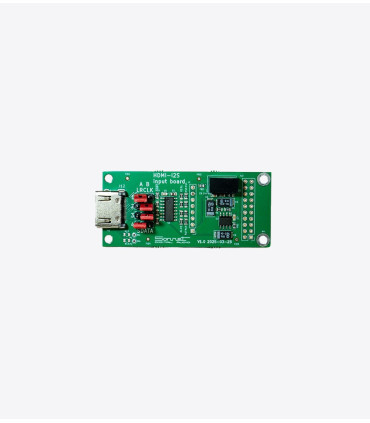

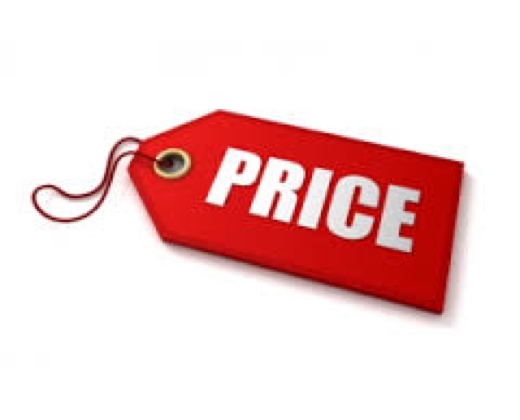
















Leave a review